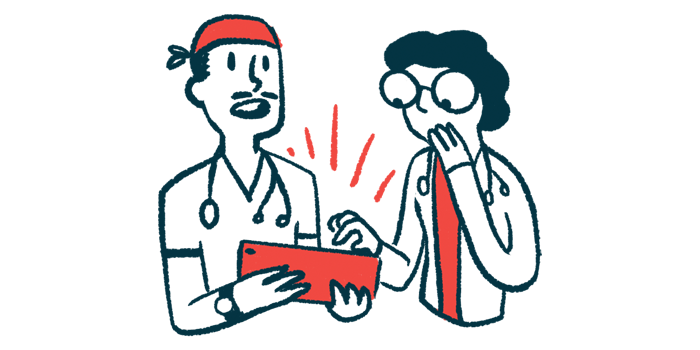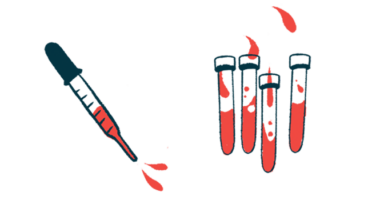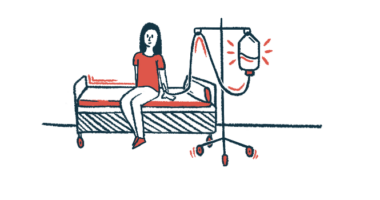Enspryng helps patients remain relapse-free after 6 months: Study
Real-world study in Japan also found patients reduced immunosuppressant use

Treatment with Enspryng (satralizumab) allows nearly all neuromyelitis optica spectrum disorder (NMOSD) patients to remain free of relapses after six months, with many reducing their use of corticosteroids and other immunosuppressants.
Nearly one-third of patients were able to stop corticosteroids, which can cause serious side effects when used long term.
These are the interim findings of a real-world, multicenter study in Japan, called SAkuraBeyond (UMIN000050027), which is following 124 NMOSD patients given the therapy.
While “a longer observation period is needed,” researchers wrote, these data align with those of a previous study of a Japanese claims database, which showed most patients who began treatment with Enspryng remained relapse-free for at least one year.
The study, “Effectiveness of satralizumab in a real-world clinical setting in Japan: Interleukin-6 receptor inhibition in neuromyelitis optica spectrum disorder: A six-month interim analysis of a multicenter medical chart review,” was published in Multiple Sclerosis and Related Disorders. It was funded by the therapy’s developer Chugai Pharmaceutical, a Roche company.
In most NMOSD cases, self-reactive antibodies against the AQP4 protein drive inflammatory attacks that damage the eye nerves and spinal cord, causing blurry or poor vision, weakness, and numbness or loss of sensation, among other symptoms. Patients often experience relapses, or periods of worsening or new symptoms.
Enspryng works by blocking action of pro-inflammatory molecule IL-6
Enspryng works by blocking the action of IL-6, a pro-inflammatory molecule that primes the production of antibodies and is linked to a greater risk for relapses. It is administered via an under-the-skin injection once every four weeks, following three initial doses given two weeks apart.
The therapy is approved for NMOSD patients with anti-AQP4 antibodies. In the U.S., it is indicated for adults, and in the European Union, for patients 12 and older. In Japan, it can be used to treat patients of all ages. However, clinical data on Japanese patients remain limited, according to the researchers.
SAkuraBeyond is an ongoing real-world study designed to assess relapse rates for 2.5 years among AQP4-related NMOSD patients starting treatment with Enspryng across 25 sites in Japan. Its main goal is to record the annualized relapse rate after 26 weeks (about six months) and 52 weeks (about one year), time to first relapse, and proportion of relapse-free patients after 26 weeks.
Interim, six-month data were available for 124 NMOSD patients who had been living with the disease for a mean of seven years. Their average age was 51.1 years, and most (93.5%) were women.
Most patients (89.5%) received Enspryng as their first biologic treatment, or a medication derived from living organisms. The main reasons doctors prescribed Enspryng to patients were to reduce oral corticosteroids (41.1%) or other immunosuppressants (17.7%). In 14.5% of patients, the therapy was prescribed to treat a recent relapse.
About 97% of patients remained relapse-free by week 26
By week 26, nearly all patients (96.6%) remained relapse-free. At that time, the annualized relapse rate was significantly lower than that of the year before they started Enspryng (0.069 vs. 0.445 relapses per year).
Of the four patients who experienced relapses — two affecting the eye nerves and two the spinal cord — during the first six months, three “did not have severe symptoms of relapse,” the researchers wrote.
Due to persisting symptoms, one of them eventually switched from Enspryng to off-label immunosuppressive treatment with rituximab (marketed as Rituxan and others).
Treatment with Enspryng also allowed most patients (71.3%) to reduce their use of oral corticosteroids. After 26 weeks, the average daily dose of corticosteroids was reduced from 10.5 to 7.2 mg. Nearly a third of patients (30.8%) stopped corticosteroids, and nearly half (49.5%) reduced their daily dose to 5 mg or less.
Six-month data were available for 17 of 20 relapse-free patients who were being treated with immunosuppressant azathioprine at the start of the study, as well as 42 of 44 patients on tacrolimus. After 26 weeks of treatment with Enspryng, six (35.3%) stopped azathioprine, and 11 (26.2%) discontinued tacrolimus.
“Our findings are consistent with the relapse-preventive effect observed in phase 3 studies,” the researchers wrote. “The final analysis at the 2.5-year follow-up in this ongoing study will report the long-term effectiveness of [Enspryng]” in real-world practice in Japan.”








